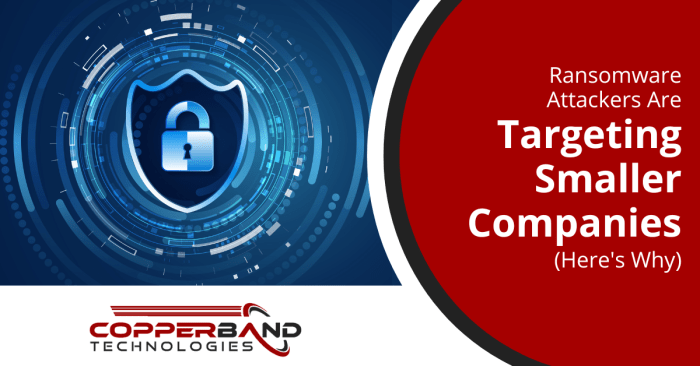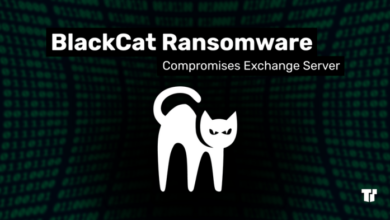
Ransomware Attackers Target Backups: A Growing Threat
Ransomware attackers target backups, a chilling reality that has sent shockwaves through the digital world. This tactic, a strategic shift in the ransomware landscape, exposes a vulnerability that can cripple organizations, leaving them with not only lost data but also a devastating blow to their operations.
The motivation behind this shift is clear: attackers aim to maximize their profits by ensuring that victims have no means of recovery. By compromising backups, they hold organizations hostage, demanding exorbitant ransoms for the return of their critical data.
This strategy has proven successful, with numerous high-profile ransomware attacks demonstrating the devastating impact of compromised backups.
The Growing Threat of Ransomware Attacks

Ransomware attacks are a growing threat to businesses and individuals alike. These attacks involve malicious software that encrypts a victim’s data and demands payment in exchange for decryption. While ransomware has always targeted data, recent trends show a worrying shift towards backups.
Attackers are increasingly targeting backups to ensure they can extort a higher ransom and maximize their profits.
Reasons for Targeting Backups
Attackers target backups for several reasons. Primarily, they aim to prevent victims from recovering their data without paying the ransom. By compromising backups, attackers can ensure that victims have no alternative but to pay up. Additionally, backups are often stored on less secure systems, making them easier to access and compromise.
Ransomware attackers are increasingly targeting backups, knowing that a compromised backup can leave a business completely vulnerable. This is why security vulnerabilities like the one found in the blastradius vulnerability radius protocol are so concerning. If attackers can exploit this vulnerability, they could gain access to critical systems and potentially compromise backups, making it even harder for businesses to recover from a ransomware attack.
Finally, attackers can use compromised backups to spread the ransomware further, targeting other systems within an organization.
High-Profile Ransomware Attacks that Compromised Backups
Several high-profile ransomware attacks have demonstrated the effectiveness of targeting backups.
- In 2021, the REvil ransomware group targeted JBS, a major meat processing company. The attack encrypted JBS’s systems and backups, forcing the company to pay a $11 million ransom to regain access to its data. The attack disrupted meat production worldwide, highlighting the significant economic impact of ransomware attacks.
- In 2021, the Colonial Pipeline ransomware attack caused a major disruption to fuel supplies in the United States. The attackers compromised the company’s systems and backups, forcing Colonial Pipeline to shut down its operations for several days. This attack demonstrated the critical infrastructure vulnerabilities to ransomware attacks.
Ransomware attackers are getting smarter, targeting not just your data but your backups too. They know that having a reliable backup is your lifeline, so they’re going after it with everything they’ve got. It’s enough to make you want to throw in the towel and just pay the ransom, but before you do, consider the potential of the new iPhone SE 4.
The specs have leaked, and they might make you wish you never bought an iPhone 15 – check them out here. But remember, even with a shiny new phone, you still need to protect your data and backups.
Ransomware is a serious threat, and you need to be prepared.
- In 2022, the Conti ransomware group targeted the Costa Rican government, encrypting the country’s systems and backups. The attack disrupted government services, including tax filing and passport applications. The attack underscored the growing threat of ransomware attacks targeting governments and critical infrastructure.
Techniques Used by Attackers: Ransomware Attackers Target Backups
Ransomware attackers employ various techniques to target backups, aiming to cripple organizations and extract maximum ransom payments. Understanding these tactics is crucial for organizations to implement effective defense mechanisms.
Exploiting Backup System Vulnerabilities
Attackers often exploit vulnerabilities in backup systems to gain access and encrypt backups. These vulnerabilities can arise from outdated software, misconfigured settings, or insecure network connections.
- Outdated Software:Ransomware can leverage known vulnerabilities in outdated backup software versions. Attackers can exploit these vulnerabilities to gain unauthorized access to backups, potentially encrypting them or even deleting them entirely.
- Misconfigured Settings:Improperly configured backup systems can expose sensitive data and create opportunities for attackers. For example, weak passwords, open ports, or overly permissive access controls can facilitate unauthorized access.
- Insecure Network Connections:If backup systems are connected to the internet without adequate security measures, attackers can exploit vulnerabilities in network infrastructure to gain access to backups.
Social Engineering and Phishing
Social engineering and phishing attacks are common tactics used by ransomware attackers to gain access to backups. Attackers often target individuals with privileged access to backup systems, tricking them into granting access or revealing sensitive information.
- Email Phishing:Attackers send malicious emails disguised as legitimate communications, often containing links or attachments that install ransomware or steal credentials. These emails may target individuals responsible for managing backup systems, attempting to trick them into clicking on malicious links or opening infected attachments.
- Pretexting:Attackers may use social engineering techniques, such as pretexting, to impersonate trusted individuals or organizations. They might call or email individuals claiming to be from IT support, asking for remote access to the backup system under the guise of troubleshooting or maintenance.
Ransomware attackers are getting increasingly sophisticated, and now they’re targeting backups as well. This means even if you have a solid backup strategy, you might still be vulnerable. That’s why it’s crucial to understand how to secure your systems, and a powerful tool for that is PowerShell.
Check out powershell the smart persons guide to learn how to use it to harden your defenses and protect your data from ransomware attacks. By understanding PowerShell, you can take control of your security and build a more resilient system that can withstand these evolving threats.
Impact of Backup Compromise

Ransomware attackers often target backups, aiming to cripple recovery efforts and maximize their leverage. When these backups are successfully compromised, the consequences can be devastating for organizations, leading to significant financial losses, business disruptions, and long-term reputational damage.
Financial Losses
Compromised backups can result in substantial financial losses for organizations. The most significant cost arises from data loss, as organizations may be forced to rebuild their systems and databases from scratch. This process can be time-consuming and expensive, involving the purchase of new hardware, software, and the cost of labor for data recovery and system restoration.
Additionally, organizations may face fines and penalties from regulatory bodies for data breaches and non-compliance. The downtime associated with data recovery can also lead to lost revenue, as businesses may be unable to operate normally.
Best Practices for Protecting Backups
Ransomware attacks can cripple businesses, and a robust backup strategy is essential for recovering lost data and restoring operations. To effectively protect your backups from ransomware, it’s crucial to adopt a comprehensive approach that incorporates multiple layers of security.
Design a Comprehensive Backup Strategy
A well-defined backup strategy is the foundation for protecting your data from ransomware attacks. This strategy should Artikel your backup goals, define the scope of data to be backed up, determine the backup frequency, and establish the retention policy.
- Identify Critical Data:Prioritize the most important data for your business, including customer information, financial records, and intellectual property. This will ensure that your backup strategy focuses on the data that is most critical to your operations.
- Establish Backup Frequency:Determine how often backups should be performed based on the rate of data changes and your business needs. For example, frequent backups are essential for critical systems that are constantly updated.
- Implement Backup Retention Policy:Define how long backups should be retained and establish a clear process for managing and archiving older backups. This ensures that you have multiple versions of your data available in case of a ransomware attack.
- Choose the Right Backup Method:Consider using multiple backup methods to ensure data redundancy. For example, you can use both on-site and off-site backups to minimize the risk of data loss in the event of a disaster.
Security Measures to Protect Backups
Once you have a comprehensive backup strategy in place, it’s crucial to implement security measures to protect your backups from ransomware attacks.
- Air Gap Backups:Isolate your backups from your network by storing them on devices that are not connected to the internet. This effectively prevents ransomware from accessing your backups.
- Immutable Backups:Use backup solutions that create immutable backups, meaning that the backups cannot be modified or deleted once they are created. This prevents ransomware from altering or deleting your backups.
- Strong Authentication:Secure your backup systems with strong passwords and multi-factor authentication to prevent unauthorized access.
- Regular Security Audits:Perform regular security audits of your backup systems to identify vulnerabilities and implement appropriate security controls.
- Backup Encryption:Encrypt your backups to protect them from unauthorized access and data breaches. Use strong encryption algorithms and store encryption keys securely.
Regular Backup Testing and Recovery Procedures
It’s not enough to simply have a backup strategy in place. You need to regularly test your backups and recovery procedures to ensure that you can restore your data quickly and efficiently in the event of a ransomware attack.
- Test Backups Regularly:Perform regular test restores to ensure that your backups are working correctly and that you can recover your data successfully. This will help you identify any issues with your backup system and address them before a ransomware attack occurs.
- Document Recovery Procedures:Create detailed documentation of your recovery procedures so that your IT team can quickly restore your systems and data in the event of a ransomware attack. This documentation should include step-by-step instructions for restoring data, rebuilding systems, and recovering applications.
- Practice Recovery Procedures:Regularly practice your recovery procedures to ensure that your team is familiar with the process and can restore your systems quickly and efficiently.
Emerging Trends and Future Considerations

The landscape of ransomware attacks is constantly evolving, with attackers constantly seeking new ways to exploit vulnerabilities and bypass defenses. As a result, it’s crucial to stay informed about emerging trends and potential future threats to effectively protect against ransomware attacks.
This section explores some of the most prominent trends and considerations for the future.
Ransomware-as-a-Service (RaaS)
The rise of RaaS has significantly lowered the barrier to entry for cybercriminals, making it easier for individuals with limited technical skills to launch ransomware attacks. RaaS platforms offer a complete toolkit, including malware, infrastructure, and support services, allowing attackers to quickly and easily deploy ransomware attacks without needing extensive technical expertise.
This accessibility has led to an increase in the number of ransomware attacks, making it more difficult for organizations to identify and respond to threats.
Increased Use of Sophisticated Techniques
Ransomware attackers are continuously refining their techniques, employing more sophisticated methods to bypass security controls and infiltrate networks. These methods include:
- Zero-day exploits: Exploiting vulnerabilities in software before vendors have released patches. This allows attackers to gain unauthorized access to systems and deploy ransomware without detection.
- Living off the land (LOLBins): Using legitimate system tools and utilities to execute malicious commands and bypass security software. This technique makes it difficult to detect and block malicious activity as it appears to be normal system activity.
- Double extortion: In addition to encrypting data, attackers also steal sensitive information and threaten to leak it publicly if the ransom is not paid. This creates additional pressure on victims to comply with demands and increases the potential damage caused by an attack.
Exploiting Emerging Technologies, Ransomware attackers target backups
As new technologies are developed and adopted, ransomware attackers are exploring ways to exploit them for malicious purposes. For example, attackers may target:
- Cloud environments: Cloud platforms offer a wide range of services and data storage, making them attractive targets for ransomware attacks. Attackers may exploit vulnerabilities in cloud services or target misconfigured cloud deployments to gain access to sensitive data.
- Internet of Things (IoT) devices: The growing number of connected devices presents a significant security challenge, as many IoT devices lack proper security controls and can be easily compromised. Attackers may use compromised IoT devices as stepping stones to gain access to networks and deploy ransomware.
- Artificial intelligence (AI): While AI can be used to enhance security, it can also be used by attackers to automate and improve their ransomware attacks. AI can be used to identify vulnerabilities, develop new attack vectors, and personalize attacks based on specific targets.







